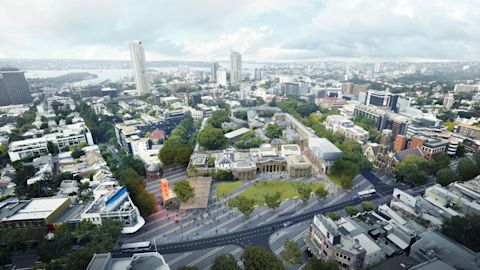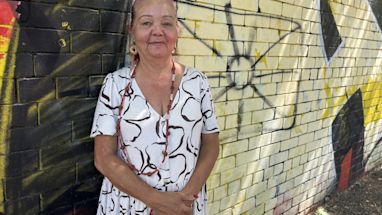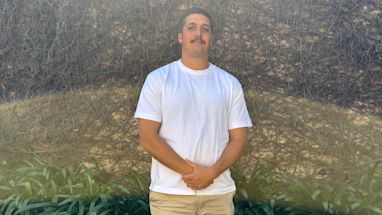There’s no doubt the Covid-19 pandemic had an unprecedented impact on the cultural and creative sector.
Not only were these industries among the most affected by the pandemic, they were already experiencing mass job losses, and spaces for creativity and culture were diminishing.
From 2012 to 2017, employment in the creative industries reduced by roughly 2,000 people, and 110,000 sqm of creative and cultural space in the local area was lost. The Covid-19 pandemic further exacerbated the sector’s challenges.
Fostering inner-city cultural precincts and ensuring the creative industry isn’t squeezed out by a sky-rocketing property market are key elements of a major new strategic plan to boost our city’s arts scene.
Making space for culture is one of 10 bold ideas outlined in our plan Sustainable Sydney 2030-2050 Continuing the Vision.
The 2-part strategy aims to create and preserve cultural and creative space in Sydney by revitalising precincts and establishing a creative land trust. The strategy also includes:
- rethinking the National Art School and Taylor Square as a major civic and cultural precinct
- opening the Darlinghurst Law Courts to Oxford Street – giving the art school a new front door, connecting it to the local community, elevating the historic complex to a major cultural destination and growing public space
- cultivating a performance precinct in Kings Cross
- creating an innovation and design precinct in Pyrmont and Ultimo
- supporting a 24-hour precinct in Alexandria
- progressing the proposed East Sydney cultural precinct centred around Oxford Street
- introducing not-for-profit creative land trusts to help cultural industries access the property market for affordable, long-term use.
Revitalising precincts
By revitalising our precincts we can protect and grow existing clusters of cultural space across Sydney. This approach advocates for enhancing existing cultural precincts and new cultural space on government-owned land and aims to change planning controls to create incentives to co-locate creative industries and enterprises in certain areas.
The proposed East Sydney cultural precinct, centred around Oxford Street, is one example. It is home to multiple education, gallery and maker spaces and lends itself to exhibitions, creative retail and accommodation where artists can live and work.

The proposal is complemented by recently updated planning rulesthat will breathe new life into Oxford Street with additional cultural space, basement and rooftop bars while protecting the area’s unique LGBTIQA+ heritage and character.
“Renewing our planning rules will help reinforce Oxford Street’s creative and cultural possibilities. We're committed to building on its reputation as an iconic gay and lesbian precinct and a centre of buzzing activity both day and night, with space for thriving businesses, creatives and culture,” Lord Mayor Clover Moore said.
Working on bringing the East Sydney cultural precinct plans to fruition is architect Tim Greer and landscape architect Anton James.
“This precinct will become an expression of Sydney’s plan for culture by celebrating and making visible the city’s creative industry,” Anton James said.
“Taylor Square will be transformed into a significant public open space with a unified pedestrian realm and a focus on civic use.
“Sydney is making a meeting place for diverse creative and cultural groups while bringing the National Art School, one of Australia’s cultural institutions, to the fore.”
Proposals are also in place for a design precinct in Pyrmont and Ultimo, a performance precinct in Kings Cross, and a 24-hour precinct in Alexandria.
Introducing creative land trusts
The development of a creative land trust would help cultural industries access the property market for affordable, long-term use. As not-for-profit landholders, they can acquire, create and secure property for creative and cultural purposes.
Other market-rate commercial or accommodation spaces on the property can subsidise the cultural infrastructure.
The model has already been successful in the UK. The London Creative Land Trust now owns 3 properties with an ambitious target of creating 1,000 new artists studio spaces within the next 5 years.
“London, like Sydney, is tackling the outflow of creativity caused by the cost of workspace,” Gordon Seabright, CEO Creative Land Trust said.
“Covid accelerated the trend, and it was clear that the city needed to do something different to remain a global cultural powerhouse.
“Creative Land Trust was founded by the Mayor of London and partners to come up with an innovative solution, and we're creating a blend of previously untapped sources of finance and pulling every lever we can find to secure long term, affordable space for artists and makers. We want to solve the problem for good, so London can focus on the culture and creativity that make the city special.
“As we celebrate securing our first 3 buildings, we congratulate Sydney for this bold commitment to making space for culture.”
More space for culture
While the City of Sydney is already the single largest provider of subsidised creative workspace in Greater Sydney, we remain committed to creating additional cultural production space.
As part of Sustainable Sydney 2030-2050 Continuing the Vision, making space for culture plans will help us generate more than 40,000sqm worth of new cultural production space in the local area by 2036.
“Setting this game-changing target for new cultural production space says a lot about the City of Sydney’s vision for the future and responds to the citizens of Sydney who want culture embedded into everyday life,” said Kerri Glasscock, CEO and Festival Director, The Sydney Fringe.
“This is a call to action for us all to work together. Government, landowners, property developers and the creative sector, to build the spaces our city needs and wants.”
Last year we announced the development of a 5-storey, 2,000sqm affordable creative space in the heart of the city. The City of Sydney Creative Studios on Bathurst Street, due to open later this year, is a state-of-the-art production and rehearsal space for dancers, musicians, film and theatre makers, digital creatives and visual artists.
We also recently called for nominations for a culture and creative sector advisory panel. The panel will provide advice about issues affecting the cultural and creative sector, with a particular focus on the challenges of finding affordable cultural making space and infrastructure.
Sustainable Sydney 2030-2050 Continuing the Vision was exhibited for community feedback before being presented to Council for adoption in June.
Published 6 April 2022, updated 11 October 2022



